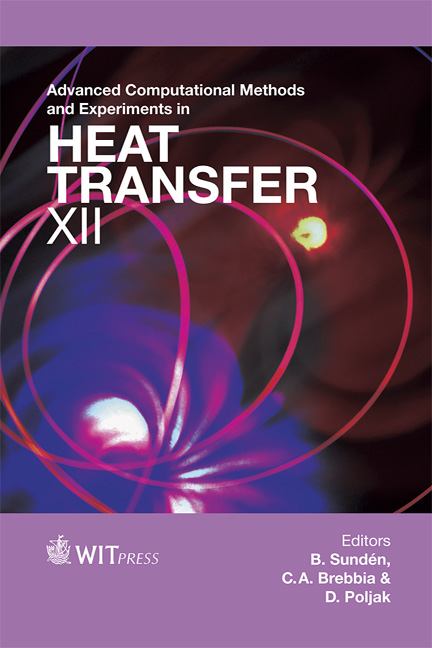Thermal Modelling Of The Wing Anti Ice System In Modern Aircrafts
Price
Free (open access)
Transaction
Volume
75
Pages
11
Page Range
305 - 315
Published
2012
Size
1,494 kb
Paper DOI
10.2495/HT120261
Copyright
WIT Press
Author(s)
D. Labuhn & M. Logeais
Abstract
An overview is provided on the way of working and on the problems that are frequently encountered when modelling the parts of the aircraft wing structure, which are exposed to elevated temperatures caused by the activation of the Wing Anti Ice System (WAIS). The aim of this paper is to highlight the exchange of simulation results such as heat transfer coefficients between two different groups with different scopes rather than presenting the values obtained. The WAIS is a means to protect the aerodynamic surfaces from ice-accretion by heating. The heating is applied to those areas that are most sensitive to a change of their aerodynamic properties. This is most important for the slats, which are located in the wing leading edge and represent the stagnation point for the flow field where small changes in the external shape strongly impact aerodynamic properties such as lift and drag. As heating source, hot bleed air from the engines is blown into the slats, the air temperature is first reduced to around 200°C by means of the pre-cooler and then distributed inside the slat by the so called piccolo tube. The thermal analysis of the heated slat requires special attention, as internal parameters like the supply pressure and temperature will vary as well as external conditions like the ambient temperature and the heat transfer coefficients. The allowed range for the slat temperature is limited by the system requirements for anti-icing performance and by the structural capability taking into account the structural strength reduction at elevated temperatures. Keywords: WAIS Wing Anti Ice System, transient thermal analysis, aircraft, CFD mapping, boundary conditions.
Keywords
WAIS Wing Anti Ice System, transient thermal analysis, aircraft, CFD mapping, boundary conditions.





